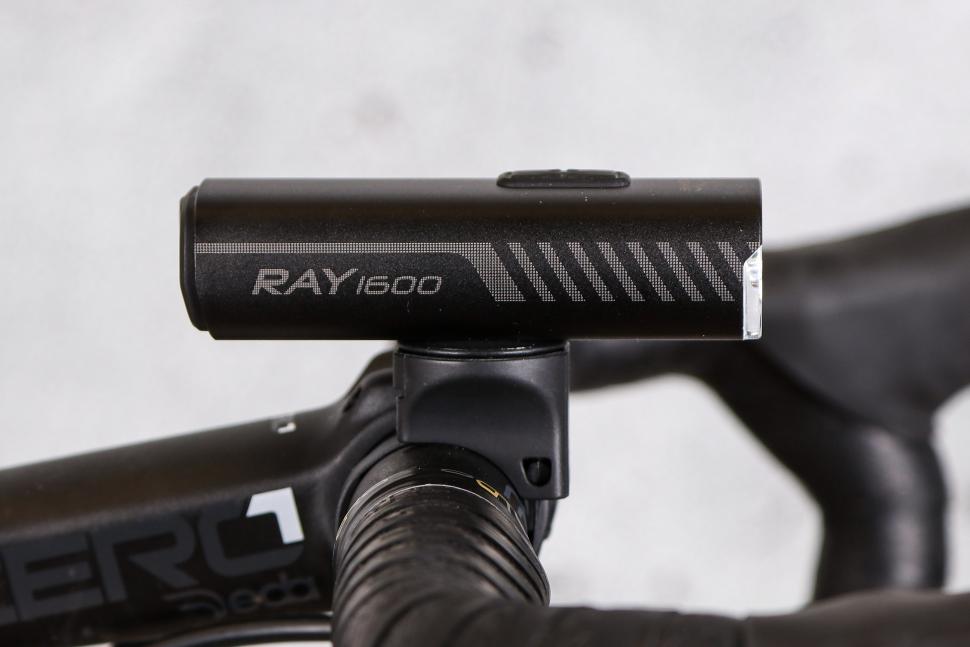Here's a mini-guide to the different types of front bike light out there...
Emergency lights
Small enough to leave in your bag for when you need them, emergency lights normally attach with a stretchy band to the bars or frame and are powered by CR2032 button cells. They don't put out a great deal of light but as an get-you-home solution if you get caught out or your main lights fail, they're a lot better than nothing.
USB-rechargeable lights have dropped in price over the last couple of years, so if you don't fancy paying for a pair of CR2032s every now and then, you can get tiny lights that'll plug into your office computer to charge, like Cateye's Orb.
Small torches
The next step up is a more powerful bar-mounted lamp. These are still lights to be seen by rather than for seeing, though most put out enough light that you can still make slow progress along unlit, well-surfaced trails and towpaths. There's almost always a flashing mode on offer too, though we'd advise discretion in its use. The pulse from even a low-power light can be bright enough to be aggravating to other cyclists, so best stick to steady mode on two-way bike paths and trails.
Almost all front lights in this category are now USB-rechargeable. That means the running cost is effectively zero, but it does mean that if you run out of juice you can't just nip into a service station and grab replacement AAAs.
Torches
There's lots and lots of choice when it comes to larger torch-style cycling front lights. Powered either by either built-in rechargeable batteries or a swappable battery pack, they put out a bit more light. If your riding takes you anywhere you need to see – rather than just be seen – you'll need at least one of these.
Often manufacturers will bundle a torch-style front light with a rear flasher, seeing to both ends of your bike and scoring you a bit of a discount in the process. Rechargeable units sometimes come with a mains adaptor but USB chargers are the majority, allowing you to juice up your light at your desk or just use another of your collection of wall-warts.
The brightest torch-style lights now kick out over 1,000 lumens, which is more than you'll ever need for road riding, but on lower settings the best ones will run all night.
Battery pack systems
The most powerful cycling front lights tend to be characterised by a separate battery pack attached to a smaller head unit that's a lot more powerful than a standard torch. They start at around £20 for a CREE-powered eBay light, but you can pay the best part of a grand for the really high end stuff. The big advantage of these systems is that you can swap the battery pack if you're doing a very long ride, and some manufacturers offer a range of battery packs. If you want to go out regularly and train after dark on the lanes, or venture off-road, then a battery pack system may be your best bet.
Dynamo lights
If you want your lights to be a permanent fixture and never worry about batteries, then a dynamo is your best option. Hub dynamos are the pick for low maintenance and decent output; most will supply 2.4-3W which is plenty for a bright light front and rear. Pick a system that stores some of the energy from the dynamo so you don't go dark when you're stopped at the traffic lights. Many riders leave their dynamo lights on for daylight running too, as they draw very little energy from the bike.
Head torches
Fitting a light to your helmet means you can point the beam where you want it, making the light a lot more useful. Some of the smaller rechargeable systems come with a helmet mount, or you could go for a more general use headband-type light and ziptie it on. Bear in mind that you should also have a fixed light on your bike if you want to comply with the law in the UK.
































Add new comment
3 comments
Can we have a definition of 'replaceable battery' please?
Traditionally, and the way I understand it to be ...
If the case has to be opened, and the battery removed by physically having to unsolder the battery, then I'd suggest that that would be non-replaceable.
A replaceable battery would be located under a flap that can be accessed by the user (it may have a locking screw), and the battery be disconnected by easy removal without tools such as soldering irons.
I'd hazard a guess that the vast majority of the lamps listed above fall in to the 'non-replacable' category, and yet only the Fly12 gets this mentioned.
Why is that?
If you have to unsolder a battery, then that's typically not user replaceable - lithium cells tend to get a bit angry when exposed to heat.
The proximate answer would appear to be that the pros/cons are pulled from the original reviews for each item, where it is mentioned for the Fly12.
Why that particular reviewer noted it for that particular item is less clear. Perhaps the particular reviewer is simply particularly conscious of that sort of things, for environmental and/or economic reasons. Perhaps because it was being reviewed primarily as a camera, and most action cameras (e.g. GoPros) do have easily replaceable batteries.